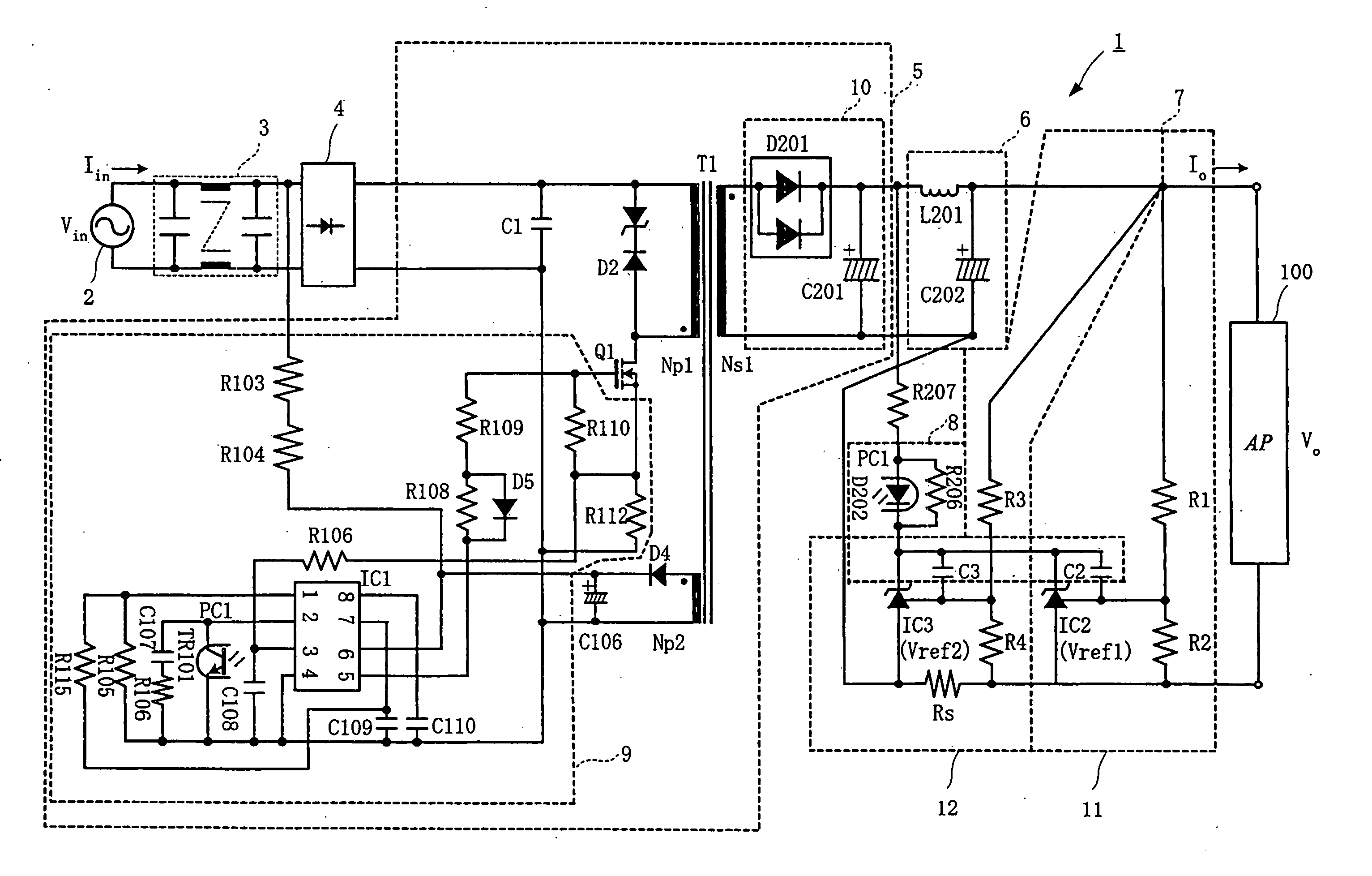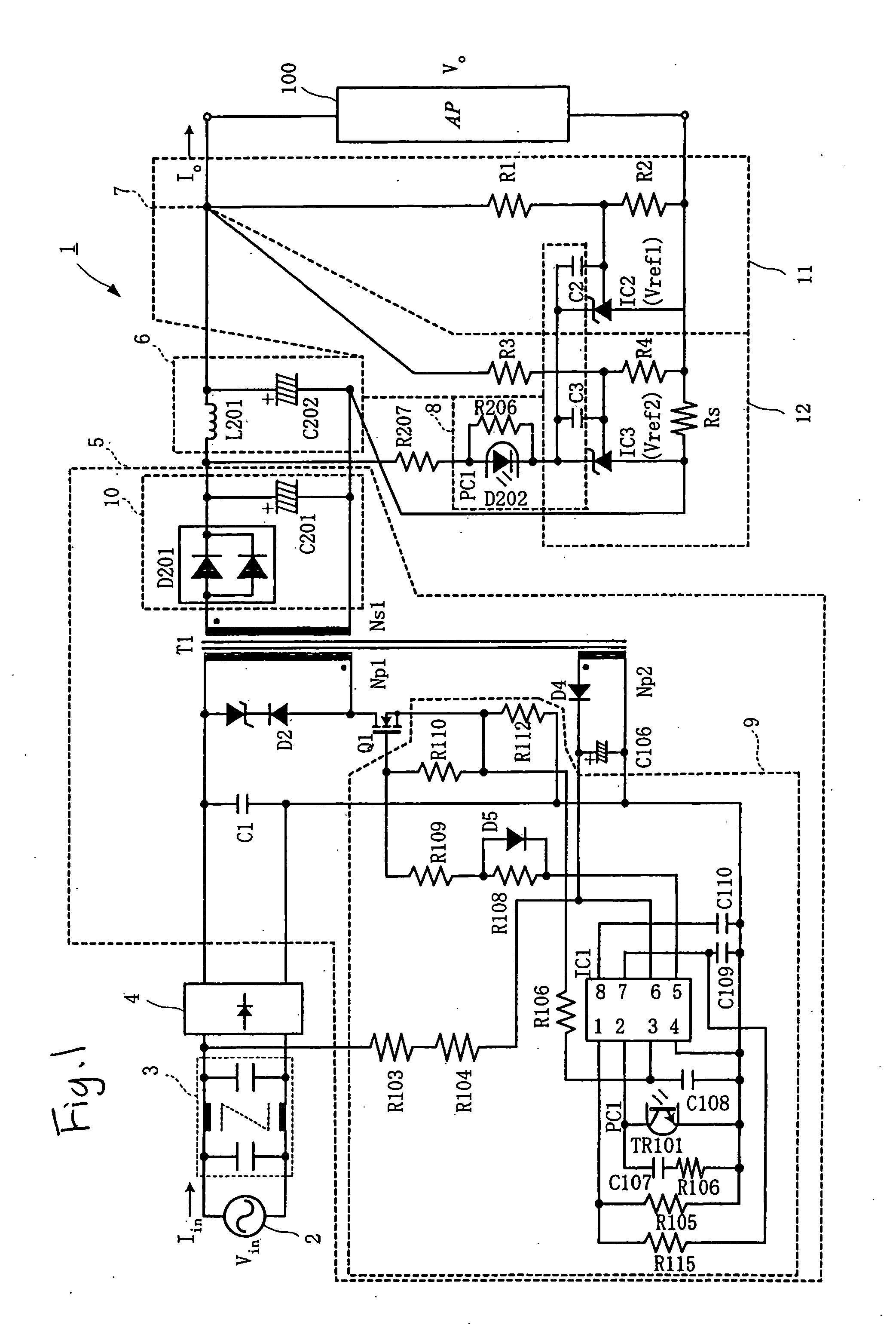Switching power device
a power device and power factor technology, applied in the direction of electric variable regulation, process and machine control, instruments, etc., can solve the problems of affecting the operation of the device, so as to reduce the size and weight of the device, suppress the generation of higher harmonics, and improve the power factor
- Summary
- Abstract
- Description
- Claims
- Application Information
AI Technical Summary
Benefits of technology
Problems solved by technology
Method used
Image
Examples
Embodiment Construction
[0056] An embodiment of a switching power device according to the invention will be described below in detail. FIG. 1 is a circuit diagram showing the structure of the switching power device according to the embodiment of the invention. FIG. 2 is a waveform diagram showing an input voltage, an input current and an output current in the flyback transformer of the switching power device. In the following description, a switching power device 1 according to the invention is applied to a power circuit for an audio amplifier. For the audio amplifier, it is suitable to use an analog amplifier having a high SVRR and a digital audio amplifier of a feedback type.
[0057] The switching power device 1 is connected to a commercial AC power supply 2 and comprises a noise filter 3, a rectifier circuit 4, an input non-capacitor flyback converter (hereinafter referred to as a non-capacitor converter) 5, a noise filter 6, a voltage control circuit 7 and a negative feedback circuit 8.
[0058] The noise...
PUM
 Login to View More
Login to View More Abstract
Description
Claims
Application Information
 Login to View More
Login to View More - R&D
- Intellectual Property
- Life Sciences
- Materials
- Tech Scout
- Unparalleled Data Quality
- Higher Quality Content
- 60% Fewer Hallucinations
Browse by: Latest US Patents, China's latest patents, Technical Efficacy Thesaurus, Application Domain, Technology Topic, Popular Technical Reports.
© 2025 PatSnap. All rights reserved.Legal|Privacy policy|Modern Slavery Act Transparency Statement|Sitemap|About US| Contact US: help@patsnap.com



